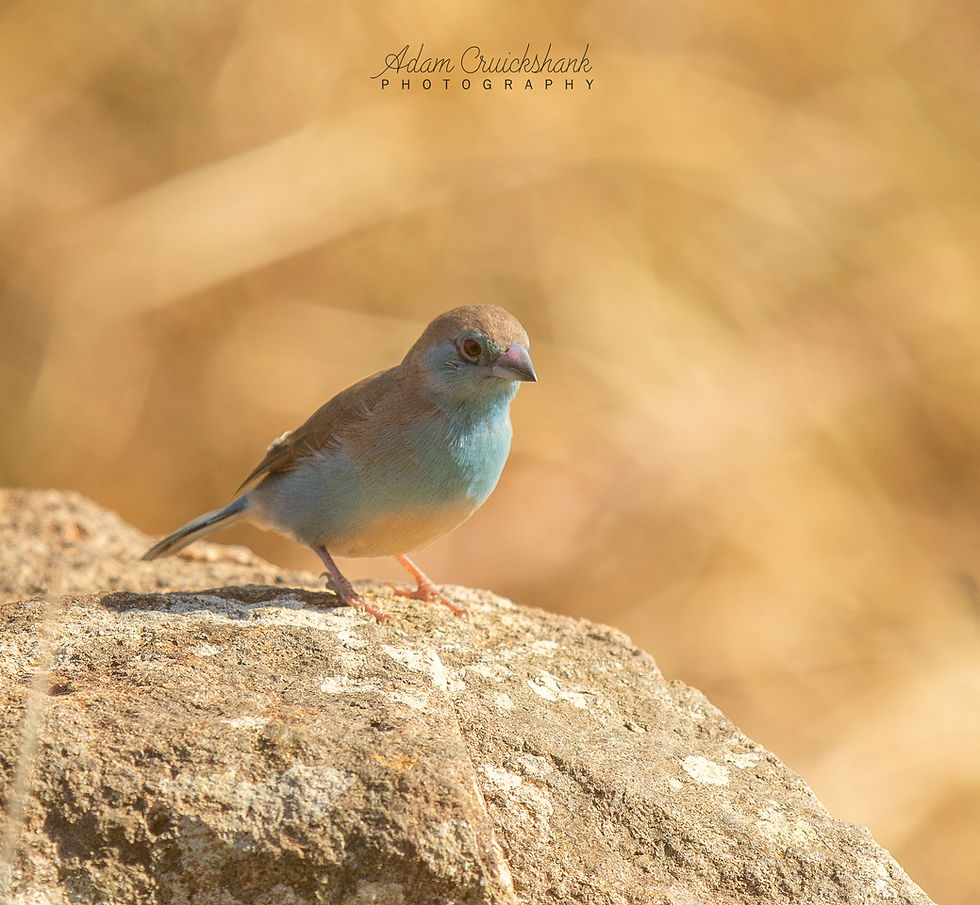Four Simple Steps to Improve your LBJ Identification Skills
- Adam Cruickshank

- Dec 22, 2023
- 3 min read

'Little Brown Jobs' or 'LBJ's' as they are more commonly known, is a group of birds that gives many birders many identification headaches. Social media birding pages are filled with photos of birders asking for help to identify an LBJ.
Here's the thing - I can't promise that you will never be stumped by a tricky LBJ identification - even many of the best birders sometimes find a specific LBJ difficult to identify correctly. But fear not! By applying these simple techniques, you can level up your LBJ identification skills.
This short article will give 4 simple things you can do to get improve your LBJ identification skills.
IDENTIFY THE FAMILY THAT THE BIRD BELONGS TO - Most people when they start birding see the colour of the bird first. Now colour is important when it comes to identifying species, but sometimes this can throw you off and make it harder to identify the species you are looking at. With LBJ's for example, they may not have a lot of colour features to look out for to identify the species. Colours can also appear different at various times of the day and when you see a bird a long way off. Something else that can add to the frustration is juvenile birds can have different plumage than adult birds. A better way is to start by working out what family the bird belongs to - take note of the shape, bill shape, overall size, and behavior of the bird. A good example of how this could be applied is to a Familiar Chat. At first, they appear to be drab and colourless species, but they have a distinctive 'chat' shape. They also flick their wings like other chats. These factors could immediately help you identify the bird quite easily. The first step is to narrow down the bird's family - some examples could be cisticolas, pipits, larks, chats etc.
NOTE THE SMALLER DETAILS - Once you have managed to get the bird into a family, start to take note of the smaller details on the bird. Take note of things such a bill shape, length, and colour. Does the bird have an eyebrow (supercilium)? How long is the tail and what colour are the outer-tail feathers for example? With the first step, you are taking note of the overall impression of the bird. With the second step, you are now taking note of the features that make up the bird.
TAKE NOTE OF DISTRIBUTION AND HABITAT - Based on the needs that different species have, their distribution and habitat will be limited. Birds can be seen out of this range, but this would be the rather than the norm. But in general, when you see a specific species take note of where you see it. What is the distribution of the bird? You can find this either with a bird app or a bird field guide. Also, take note of the habitat you see the bird in. When you put these two factors together, you will be able to narrow down the possible list of species that you are looking at.
LEARN THE CALLS - Faansie Peacock notes "Identification based on sound is often easier and more reliable than identification based on visual characteristics". Learning bird calls is probably the number one way to improve your LBJ identification skills. The reason that I put it last on the list is because this is the area of birding that scares many people the most. But a simple way to start to by learning the LBJ calls that are in your area. On most bird apps, you can set the app to only show the birds that are in a specific area. Start by only learning the species in your area. Before going on a trip, you can take some time to brush up on calls for the area you will be visiting. The key to learning calls is repetition. Another thing that will help is to note the calls of birds that you see visually. It helps to remember when you have both seen and heard the bird at the same time.
Doing these four things might not make you an LBJ expert, but they will help you improve in this area of birding.
If you want to take your LBJ identification to the next level, we recommend you purchase Chamberlain's LBJ's.
Before leaving the website, be sure to check out the Accommodation Directory for venues catering specifically to birders. We also encourage you to visit our Online Shop for gear and books at competitive prices.
Quote in the article taken from Chamberlains LBJ's by Faansie Peacock.


